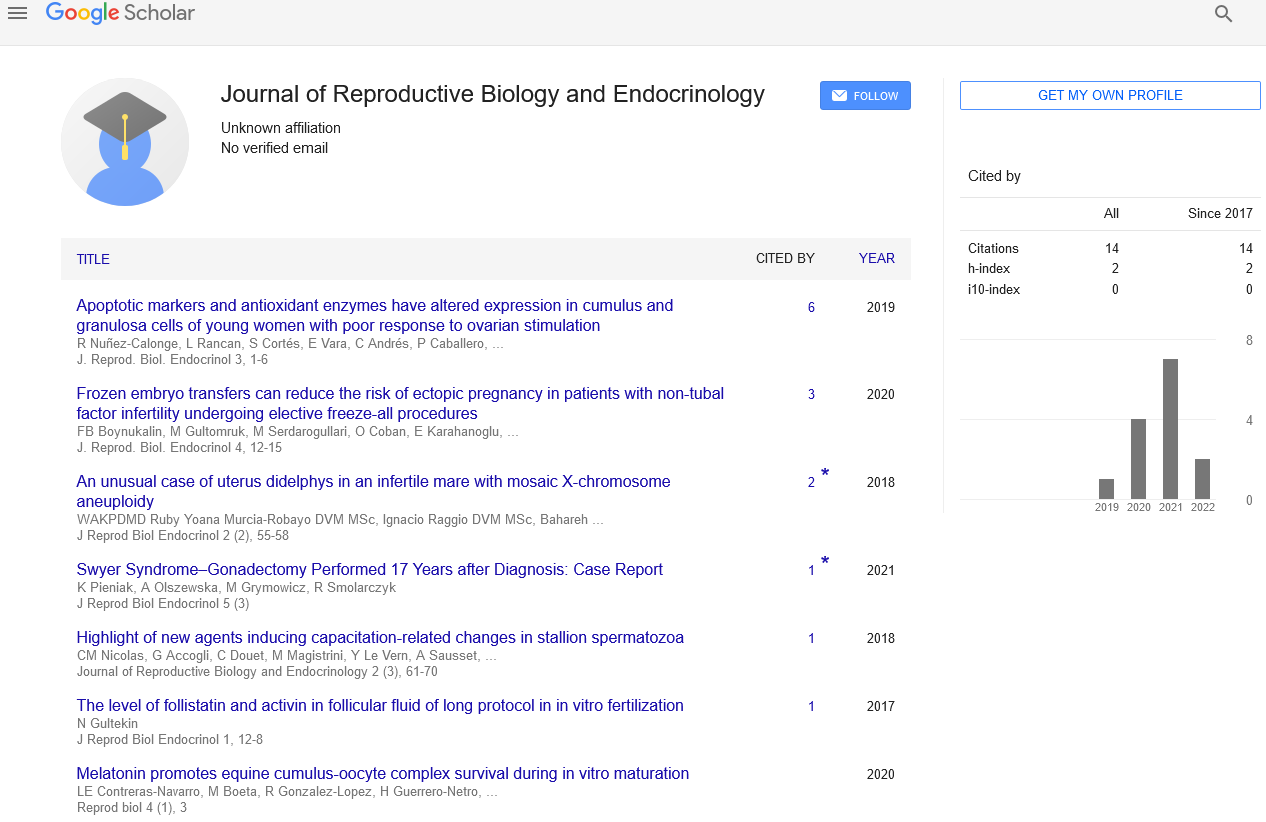Reproductive medicine & women healthcare
Received: 03-Mar-2022, Manuscript No. PULJRBE-22-4845; Editor assigned: 05-Mar-2022, Pre QC No. PULJRBE-22-4845(PQ); Accepted Date: Mar 29, 2022; Reviewed: 14-Mar-2022 QC No. PULJRBE-22-4845(Q); Revised: 18-Mar-2022, Manuscript No. PULJRBE-22-4845(R); Published: 30-Mar-2022, DOI: 10.37532.2022.6.15
Citation: Amakali S. Introduction to diabetes and endocrinology. J Reprod Biol Endocrinol. 2022;6(2 ):15.
This open-access article is distributed under the terms of the Creative Commons Attribution Non-Commercial License (CC BY-NC) (http://creativecommons.org/licenses/by-nc/4.0/), which permits reuse, distribution and reproduction of the article, provided that the original work is properly cited and the reuse is restricted to noncommercial purposes. For commercial reuse, contact reprints@pulsus.com
Abstract
Introduction
Women’s health has long been a source of worry, but it has now reached an all-time high. Men and women face identical health issues in general; the main difference is that women’s health requires special attention. Pregnancy, menopause, and disorders of the female organs are all fascinating health problems for women. There are some procedures, such as labour and pregnancy that include health risks and are the leading cause of mortality in young women between the ages of 15 and 19. HIV/AIDS is the primary cause of mortality among women of reproductive age, owing to biological causes as well as a lack of understanding about HIV and unsafe sex among women. Unwanted pregnancies, unsafe abortions, sexually transmitted illnesses, and other problems come from a lack of contraception.
Importance Of Women’s Health
Women’s health is a medical field dedicated to the treatment and diagnosis of illnesses and conditions affecting women’s physical and mental well-being. Women and men often face comparable health issues; the main difference is that women’s health requires extra attention. There are biological processes in young women such as puberty, pregnancy, delivery, and health hazards. Women’s health is particularly important since they face distinct health-care issues and are more likely than males to be diagnosed with certain disorders. The major causes of mortality for women include diabetes, heart disease, cancer, and chronic disorders.
Reproductive medicine
Reproductive medicine is the discipline of medicine that deals with the prevention, diagnosis, and treatment of reproductive issues. The goal of reproductive medicine is to promote and preserve the health of women and men. Reproductive anatomy, endocrinology, physiology, and pathology are the foundations of reproductive medical expertise. When it comes to reproductive medicine, it may be separated into two categories: prenatal medicine and postnatal medicine. Sexual education, family planning, reproductive system illnesses, birth control, infertility, and sexual dysfunction are among topics covered in reproductive medicine. Reproductive medicine examines ovulation, pregnancy, menstruation, menopause, and other gynaecological issues.
Reproductive Technologies In Medicine
All current and future applications of innovation in human and animal reproduction are covered by regenerative innovation. ARTs (Assisted Reproductive Technology), contraception, and other methods are included. The use of reproductive technology to treat infertility and low fertility is known as assisted reproductive technology (ART), and it is presently the only form of reproductive technology in clinical use. When other fertility medications have failed, or when there is severe male factor infertility, major endometriosis, or tubal obstruction, Assisted Reproductive Technology (ART) may be recommended.
Assisted reproductive technology
Infertility is treated using assisted reproductive technology (ART). Fertility treatments that deal with both eggs and sperm are included. It operates by draining the ovaries of eggs. Embryos are created by mixing the eggs with sperm. The embryos are then implanted back into the mother or father’s body. The most popular and efficient kind of ART is in vitro fertilisation (IVF).
Donor eggs, donor sperm, and previously frozen embryos are sometimes used in ART operations. A surrogate or gestational carrier may also be used. A surrogate is a woman who becomes pregnant using the sperm of one of the couple’s partners. A gestational carrier conceives a child with the help of an egg from one partner and sperm from the other.





